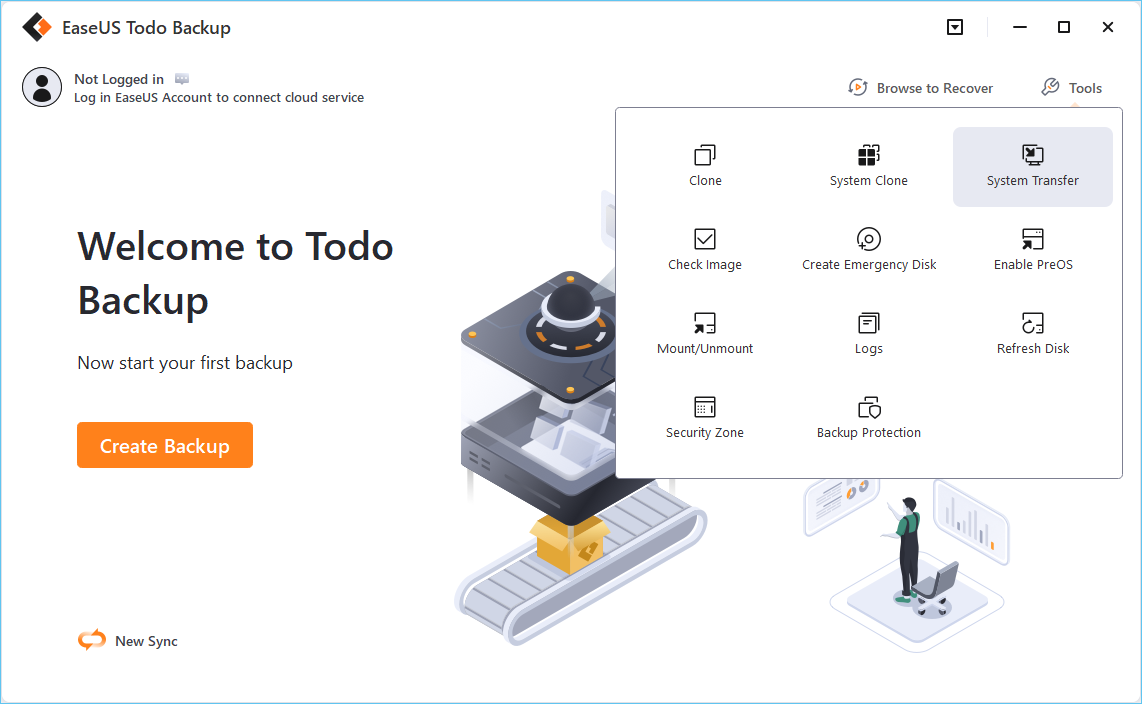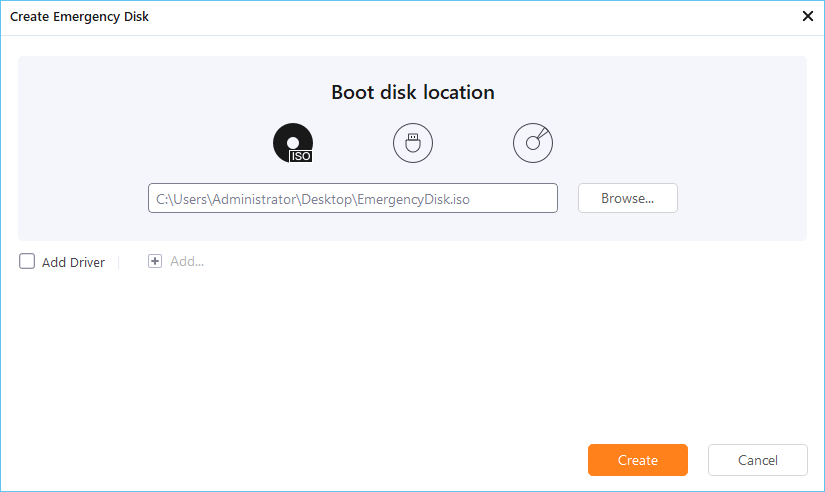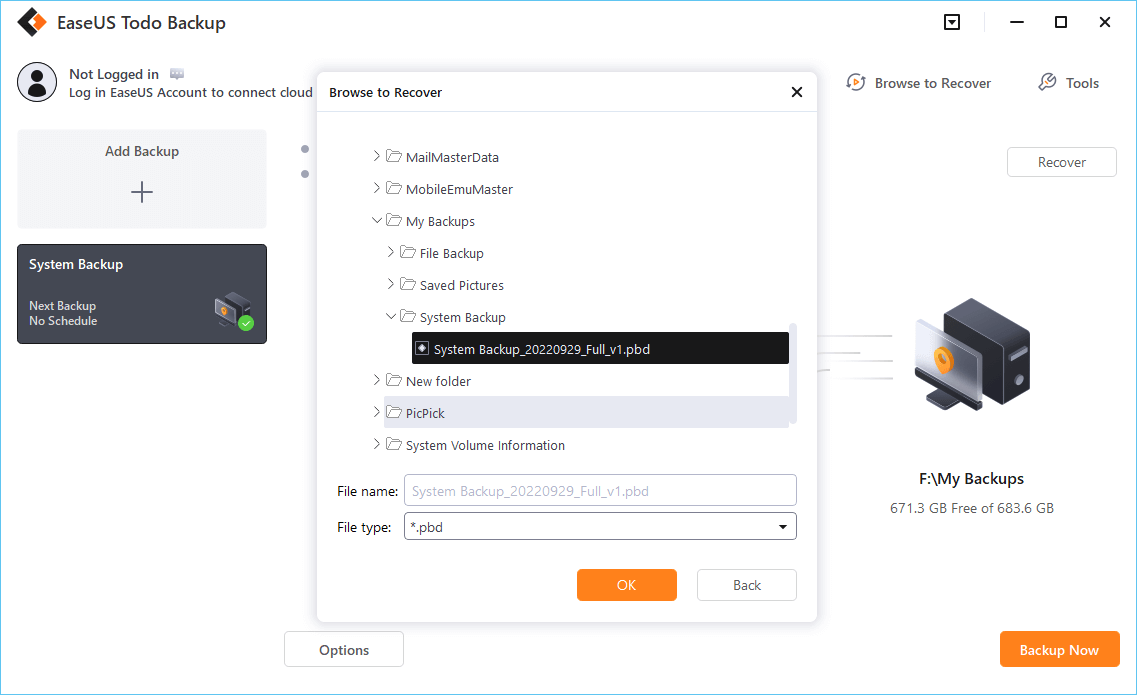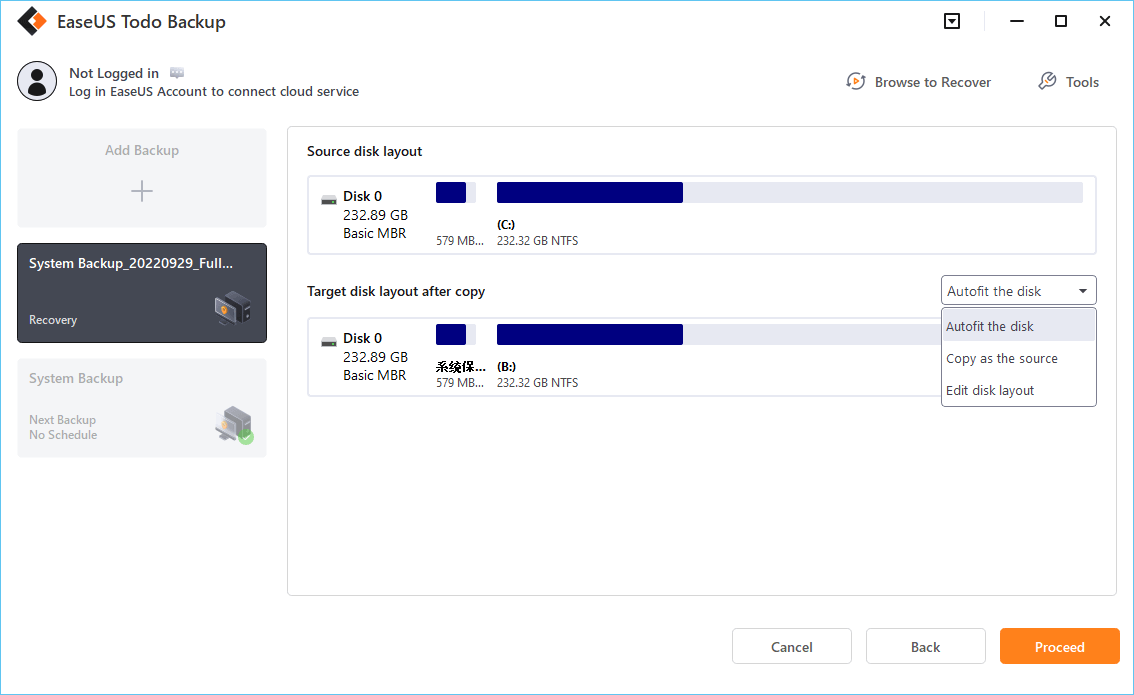When it comes to installing Windows 10 on a new hard drive from USB or on a new PC, the most recommended way on forums and Google searches is the clean install. Do you know how to install Windows 10 on a new hard drive? And how to install Windows 10 on a blank hard drive without disk or USB? This tutorial shows you three ways to install Windows 10 on a new hard drive in three ways, along with the detailed steps and screenshots of the operations. Read in-depth.
How to Install Windows 10 on a New Hard Drive by System Transfer
Installing Windows 10 on new hard drive is usually too difficult, from downloading the ISO files and burning it to the pointed hard drive for home users who don't acquire much IT knowledge. They simply don't know where to start. Then, why not take a simple way to finish the job independently?
This part introduces an easy system transfer tool - EaseUS Todo Backup to help you install Windows 10 on new hard drive without an installation CD. With the system transfer function, you can finish installing Windows 10 on an empty hard drive by backing up the Windows operating system and restoring the system image to the new hard drive in a few clicks.
Secure Download
EaseUS Todo Backup provides full-around options for file backup, system backup, disk/partition backup, disk clone, creating a portable Windows USB drive, and migrating Windows 10 to SSD.
Now, download EaseUS Todo Backup to use the system transfer feature to easily install Windows 10 on a new hard drive without disk.
Step 1. Create an Emergency Disk to USB
1. Connect an empty USB flash drive or external hard drive (with over than 100GB space) to your PC.
Note: Initialize the USB or external hard drive as MBR, and create two partitions: set the first partition as FAT32 and the second partition as NTFS.
2. Run EaseUS Todo Backup and click "Tools" > "Create Emergency Disk".
3. Choose USB as the disk location to create the emergency disk and click "Create".
The bootable disk will help you boot computer and transfer system image to the new PC.
Step 2. Create System Backup Image on Source Computer
1. Click "OS" on the main page and Windows OS will be selected by default.
2. Choose the second partition of the USB drive which contains the emergency disk to save system image.
You may also save system backup image to another empty external disk (which must be equal or bigger than the system C drive).
3. Click "Backup Now" to start creating a system backup image to the target device.
Step 3. Boot Target Computer from EaseUS Todo Backup Emergency Disk
1. Eject EaseUS emergency disk and system backup image USB and connect it to the new computer.
2. Restart PC and press "DEL/F2/F10/F12" to boot into BIOS.
3. Go to the boot menu and set the computer to boot from the EaseUS Todo Backup emergency disk.
If you want to restore the system image to a GPT disk, you need to change the boot mode to EUFI in BIOS. Then your computer will enter EaseUS Todo Backup main interface.
Step 4. Transfer System to the New Computer
Note: Restoring system image to the new computer will erase the data on the target disk. Remember to back up the files in advance or use an empty disk to restore the system image to avoid data loss.
1. On EaseUS Todo Backup main interface, click "Tools" > "System Transfer".
2. Select the system image on your USB external drive and click "OK" to continue.
3. Then click "Proceed" to start transferring the system to a new computer.
Step 5. Restart PC with transferred system
1. Enter BIOS and set computer to boot up from the drive with the transferred system.
2. Save all changes and restart your computer.
3. Update all drive drivers and programs to ensure all things will work just fine on the new computer.
It's not complicated anymore to install Windows 10 on a new hard drive with EaseUS system backup and restore software. No Windows 10 installation USB flash drive or ISO file is needed.
If you happen to meet 'system restore did not complete successfully with errors', take the fixes in the article to troubleshoot. You can also use EaseUS Todo Backup to create system image on USB drive and restore the system image from the external hard drive.
How to Install Windows 10 on a New Hard Drive with USB
If you're wondering how to install Windows 10 on a blank hard drive only with the help of a USB flash drive, read through this part and learn to create a bootable Windows 10 installation USB drive using a Windows ISO file or a Windows Setup DVD.
Preparations before installing Windows 10
- Windows 10 install.iso file or DVD
- A USB flash drive with at least 8GB free space
- An idle computer where you'll format the USB flash drive
- A Windows 10 installation USB creating tool
- A new hard drive that you'll install Windows 10 on it
Step 1. Format the USB drive.
- Connect the USB flash drive to your computer.
- Right-click on the Start button and choose "Disk Management".
- Find and right-click the USB drive partition and choose "Format". Select the FAT32 file system to be able to boot either BIOS-based or UEFI-based PCs.
- Right-click the USB drive partition and click Mark Partition as Active.
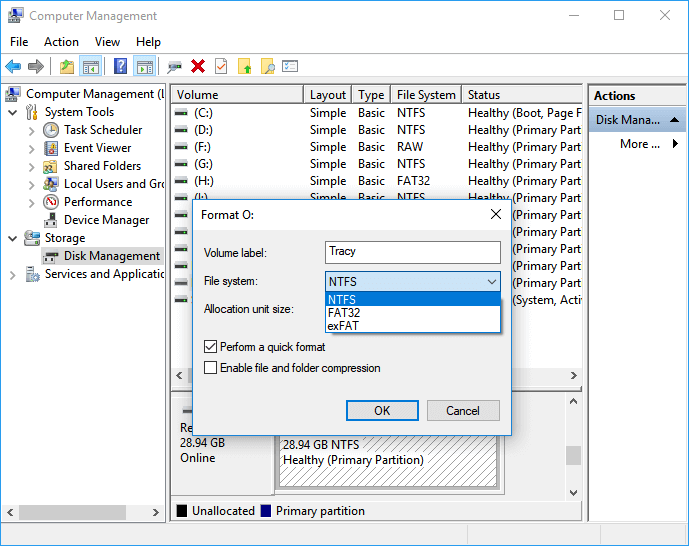
Step 2. Create a Windows 10 installation USB flash drive.
How to create a Windows 10 bootable USB to install Windows 10 on a new hard drive? UltraISO (https://www.ultraiso.com/)can be helpful to burn a Windows10 DVD or ISO to the USB flash drive. Do it by following the steps below.
- Plug the empty formatted USB drive to the computer.
- Open and run the UltraISO tool. Select "File" > "Open" to import the ISO installation source file of the Windows 10 operating system.
- Select "Bootable" > "Write Hard Disk Image" from the main menu. Select the USB drive you intend to boot from.
- Click the "Write" button, and then the USB flash drive will be burned and written into the Window10 system.
- After the burning is completed, you can use the USB as the installation disk to install Windows 10 on new hard drive.
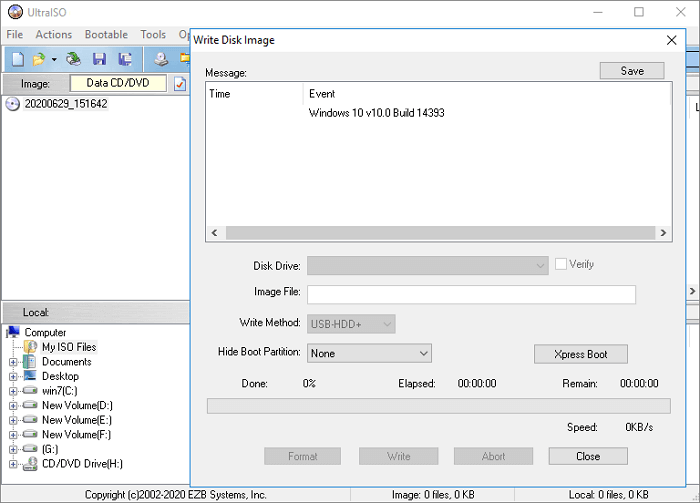
Step 3. Install Windows 10 on a new hard drive with Windows 10 Bootable USB
Now that you've created a Windows 10 installation USB, you can follow the steps below to install Windows 10 on a new hard drive. Connect both the bootable USB flash drive and new hard drive to your computer, ensure the two drives to be recognized.
- Restart your computer and boot your PC from USB or DVD media. If not, you need to press a key (such as F2, F12, Delete, or Esc) immediately after you turn on your PC to open the boot menu and change the boot order. If the bootable USB drive not showing up, fix the problem instantly.
- Follow the on-screen instructions to install Windows 10. Note that some installation may continue after you log in, do as required.
- After Windows 10 installation finishes, make sure you have all the necessary device drivers installed. Download EaseUS DriverHandy to update your device drivers. This tool can help you update your drivers easily with one click. There is a guide for you:
Step 1. Download EaseUS DriverHandy and click it open.
Step 2. Scan and update the target device drivers.
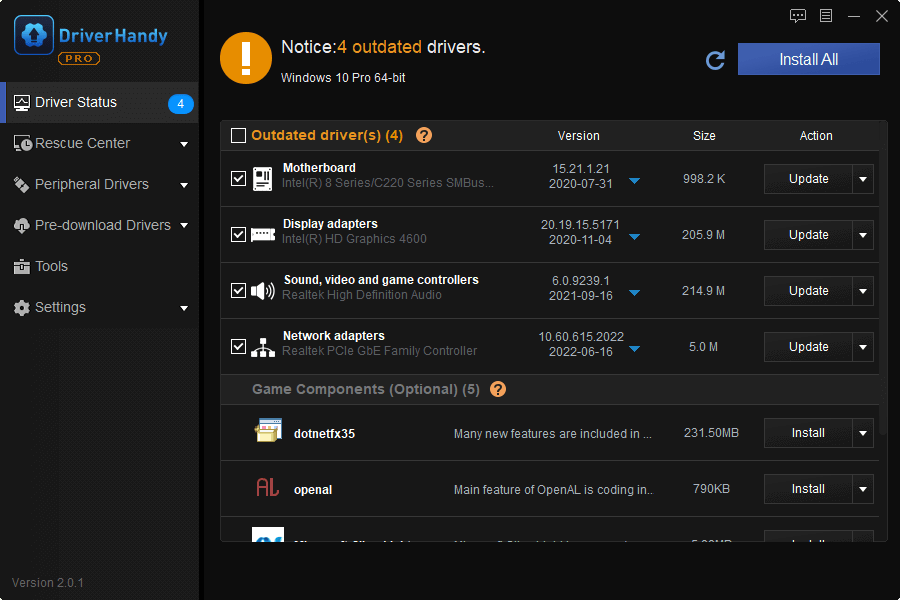
Read Also: Install Windows 10 on New PC Without Operating System
How to Install Windows 10 on New Hard Drive with Windows Media Creation Tool
Another way to install Windows 10 on a new hard drive or new PC is by applying Windows Media Creation Tool. The overall operation can be divided into three steps, but there are still many small steps that need to be carefully completed. Read the full guide on how to install Windows 10 on a new PC with Windows Media Creation Tool.
Step 1. Download Windows 10 Media Creation Tool
Step 2. Create Windows 10 installation USB flash drive or ISO file
Step 3. Install Windows 10 on a new hard drive with the media creation tool
Install Windows 10 on New Hard Drive Summary
After reading the above, we can draw a conclusion. Although three are three ways available to install Windows 10 on new hard drive, the simplest solution is using EaseUS system transfer program.
You don't have to go through the complicated process of creating a Windows 10 installation disk. With a few clicks, you can safely and quickly transfer Windows 10 to new hard drive without reinstalling without any startup issue. Don't hesitate. Try it now.
How to Install Windows on a New Hard Drive FAQs
If you have more questions about installing Windows on a new hard drive like listed below, check the brief methods.
How do I put Windows on a new hard drive?
To put and install Windows on a new hard drive, you have three ways to figure out.
- Method 1. Install Windows 10 on new hard drive with EaseUS system transfer utility
- Method 2. Install Windows on a new hard drive with Windows 10 installation USB
- Method 3. Install Windows 10 on new hard drive with Windows Media Creation Tool
The first method is the easiest one. The other two require complex operations. You can go to each part to check details.
How do I install Windows 10 on a new SSD?
To install Windows 10 on a new SSD, you can use the system transfer feature of EaseUS Todo Backup to make it.
Step 1. Create an EaseUS Todo Backup emergency disk to USB.
Step 2. Create Windows 10 system backup image.
Step 3. Boot the computer from EaseUS Todo Backup emergency disk.
Step 4. Transfer Windows 10 to the new SSD on your computer.
How do I install Windows 10 after replacing hard drive without disk?
To install Windows 10 after replacing the hard drive without disk, you can do it by using Windows Media Creation Tool.
First, download the Windows 10 Media Creation Tool, then create Windows 10 installation media using a USB flash drive. Last, install Windows 10 to a new hard drive with USB.
Was This Page Helpful?
Updated by Jerry
"I hope my articles can help solve your technical problems. If you are interested in other articles, you can check the articles at the bottom of this page, and you can also check my Facebook to get additional help."
Jean is recognized as one of the most professional writers in EaseUS. She has kept improving her writing skills over the past 10 years and helped millions of her readers solve their tech problems on PC, Mac, and iOS devices.
Related Articles
-
SSD Not Detected in BIOS | Top 8 Ways to Fix🔥
![author icon]() Jerry/2024-10-25
Jerry/2024-10-25 -
Is It Safe to Delete A System Reserved Partition? Everything You Should Know
![author icon]() Cici/2024-08-27
Cici/2024-08-27 -
Top 7 Ways To Fix A Disk Read Error Occurred in Windows 10/8/7
![author icon]() Tracy King/2024-08-22
Tracy King/2024-08-22 -
Windows 10 Internet Explorer Has Stopped Working
![author icon]() Jean/2024-07-01
Jean/2024-07-01
EaseUS Data Recovery Services
EaseUS data recovery experts have uneaqualed expertise to repair disks/systems and salvage data from all devices like RAID, HDD, SSD, USB, etc.
